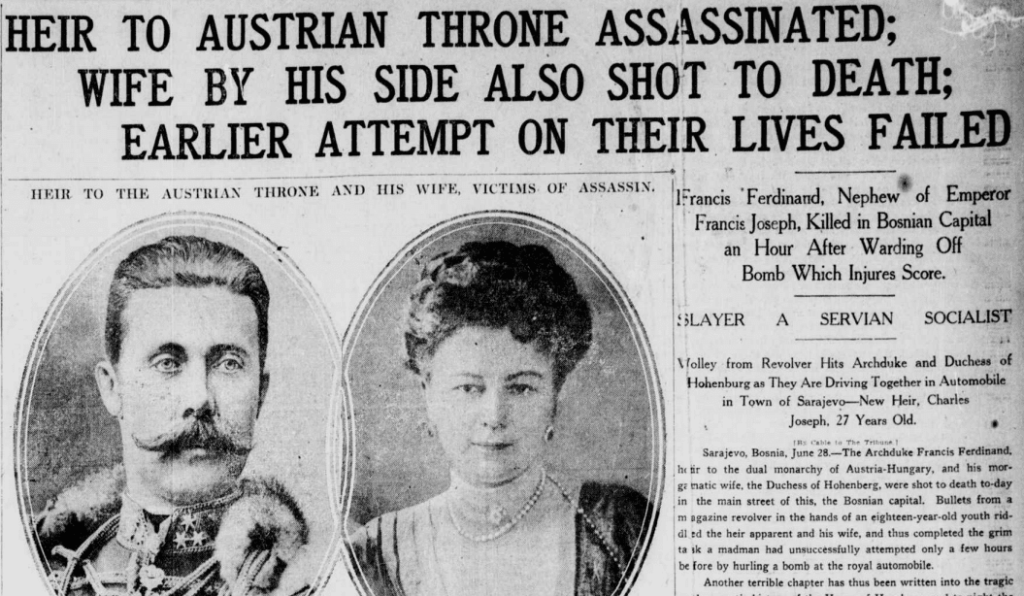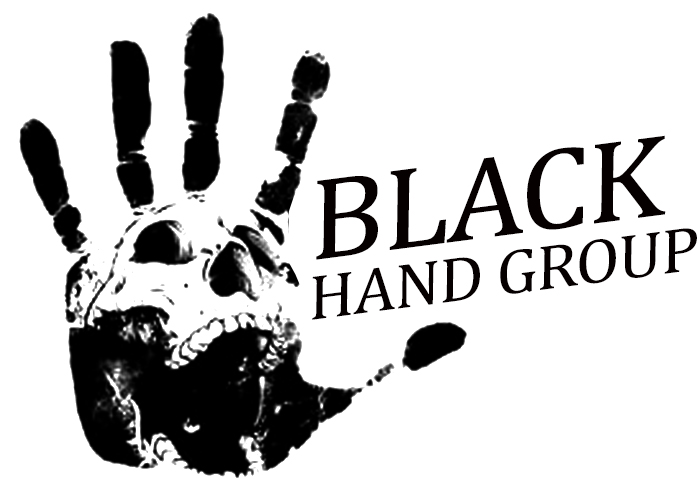The Black Hand Group remains a dark chapter in the history of secret organizations, shrouded in mystery, intrigue, and bloodshed. This article will explore the origins, goals, and key events related to the group, shedding light on its notorious activities and the impact it had on the world. We’ll also look at the people involved, the places connected to their operations, and the group’s ultimate agenda.
What is the Black Hand Group?
The Black Hand, also known as Crna Ruka in Serbian, was a secret society founded in 1911. It was composed of members of the Serbian military and nationalists who were fiercely dedicated to the cause of Serbia’s independence and the unification of South Slavic peoples under Serbian rule. However, their tactics were far from peaceful. The Black Hand was involved in several violent acts, most notably the assassination of Archduke Franz Ferdinand of Austria-Hungary, an event that helped trigger World War I.
This shadowy group operated in secrecy, using violence and fear to further its cause. Many of its members believed that violence was the only way to achieve political goals and to defend the Serbian people from foreign domination. But beyond their stated cause, their methods and influence stretched far beyond the borders of Serbia.
Origins of the Black Hand Group
The origins of the Black Hand are tied to the growing discontent among the Serbs living under the rule of the Austro-Hungarian Empire and the Ottoman Empire. Many felt oppressed and wanted independence, and the idea of a united South Slavic state, which would include Serbia, became increasingly popular. In 1908, the Austro-Hungarian Empire annexed Bosnia and Herzegovina, which had a significant ethnic Serbian population, causing outrage in Serbia.
In response, a group of Serbian officers, led by Colonel Dragutin Dimitrijević, also known as Apis, formed a secret society with the aim of achieving the liberation of Serbs under foreign rule. The group took on the name “Black Hand” to signify their willingness to use extreme and violent measures to achieve their goal. The Black Hand’s early activities focused on the assassination of prominent individuals whom they considered to be enemies of Serbia’s independence.
Question: Why did the Black Hand use violence?
The Black Hand believed that violence was necessary to achieve their political goals. They were convinced that peaceful diplomacy was ineffective in the face of oppression, and they thought assassinations and terror could force political change. Many of them were also motivated by a deep sense of nationalism and pride for their Serbian heritage.
The Assassination of Archduke Franz Ferdinand

The most infamous act associated with the Black Hand is the assassination of Archduke Franz Ferdinand, the heir to the Austro-Hungarian throne, on June 28, 1914. This event, often referred to as the Sarajevo Assassination, became the spark that ignited World War I.
Franz Ferdinand was seen as a symbol of Austrian oppression in the Balkans, and his assassination was seen by the Black Hand as a way to send a powerful message to Austria-Hungary. The assassination was carried out by Gavrilo Princip, a member of the Black Hand, along with other conspirators.
The group’s leaders had been involved in planning the assassination, including Colonel Apis, who had close ties to the conspirators. The assassination triggered a series of diplomatic crises between Austria-Hungary, Serbia, and other European powers. Within weeks, the world was plunged into World War I.
Question: Why was Archduke Franz Ferdinand targeted?
The Black Hand viewed Archduke Franz Ferdinand as a threat to the Slavic peoples living under Austro-Hungarian rule. They saw his potential ascension to the throne as a step toward further oppression. His visit to Sarajevo in June 1914 was seen as an opportunity to strike a blow against the empire.
The Black Hand’s Leadership and Key Figures
The Black Hand was primarily led by military officers and political extremists, and some of the most important figures include:

- Dragutin Dimitrijević (Apis): The founder of the Black Hand, Apis was a Serbian military officer who played a key role in organizing and directing the group’s activities. His vision of a greater Serbia was at the core of the Black Hand’s mission. He was instrumental in orchestrating the assassination of Archduke Franz Ferdinand and other high-profile acts of violence. Apis was later arrested, tried, and executed for his role in the assassination.
- Gavrilo Princip: A Bosnian Serb student who became the most infamous member of the Black Hand after he carried out the assassination of Archduke Franz Ferdinand. Princip believed that killing Ferdinand would lead to the liberation of Slavic peoples under Austro-Hungarian rule and contribute to the creation of a greater Serbia.
- Vojislav Tankosić: Another key member of the Black Hand, Tankosić was a Serbian military officer who provided support for the assassination plot. He was one of the individuals responsible for the training and guidance of Gavrilo Princip and the other conspirators.
- Pavle Đurišić: A member of the Black Hand, he played a role in the activities of the group and was involved in the Serbian nationalist movement.
The Black Hand’s Agenda and Goals
The ultimate goal of the Black Hand was to create a united South Slavic state, with Serbia at the helm, and to drive out foreign influences like Austria-Hungary and the Ottoman Empire. They believed that violence was a necessary tool to achieve these objectives. While the assassination of Archduke Franz Ferdinand was their most famous act, the Black Hand was involved in many other violent activities, including assassinations, bombings, and the destruction of political enemies.
The group’s methods were ruthless, and they were willing to sacrifice lives for their cause. They operated in the shadows, using conspiracies and secret networks to carry out their missions. However, despite their violent tactics, their actions ultimately led to significant political and military consequences, both for Serbia and the world.
The Black Hand’s Role in World War I
The assassination of Archduke Franz Ferdinand set off a chain reaction of events that led to World War I. Austria-Hungary, backed by Germany, declared war on Serbia, which was allied with Russia. The war soon spread, involving most of Europe and ultimately leading to a global conflict.
While the Black Hand itself was not the direct cause of the war, their actions played a major role in triggering the conflict. The assassination provided Austria-Hungary with the justification it needed to take aggressive action against Serbia. The war led to the downfall of empires, redrew national borders, and caused the deaths of millions of people.
The Black Hand’s Decline and Legacy
After World War I, the Black Hand’s influence began to fade. The group was officially disbanded in 1917, and many of its members were arrested, tried, and executed for their roles in the assassination of Archduke Franz Ferdinand and other acts of violence.
The legacy of the Black Hand is complicated. While some view them as national heroes who fought for the liberation of their people, others see them as terrorists who used violence to further their political aims. The group’s actions had a profound impact on the course of history, and their role in the assassination of Archduke Franz Ferdinand remains one of the most debated events of the 20th century.
Question: Was the Black Hand a terrorist organization?
The Black Hand is often described as a terrorist organization because of their use of violence and assassination to achieve political goals. Their methods were brutal and aimed at instilling fear and forcing change through violent acts. However, from their perspective, they believed their actions were justified by their nationalist cause.
The Black Hand’s Influence on Modern Secret Societies
The Black Hand’s legacy can still be felt today in the world of secret societies and shadowy organizations. While many secret societies operate with less violence, the Black Hand’s use of clandestine operations and conspiracies remains a hallmark of such groups. It is clear that the group’s methods—terrorism, assassination, and the manipulation of political power—have inspired numerous other radical organizations throughout history.
Some conspiracy theorists even suggest that the Black Hand was part of a much larger global network, with influence stretching far beyond Serbia and the Balkans. While there is little concrete evidence to support such claims, the shadow of the Black Hand looms large in the history of secret societies.
Conclusion: The Black Hand’s Dark Legacy
The Black Hand Group was a secret society that changed the course of history. Their violent actions, particularly the assassination of Archduke Franz Ferdinand, played a key role in the events that led to World War I. The group’s members were driven by an intense sense of nationalism and a desire to free the South Slavic peoples from foreign oppression. However, their methods—marked by bloodshed, fear, and secrecy—led to devastating consequences, not only for Serbia but for the entire world.
Their legacy remains a source of controversy and debate. Some view them as freedom fighters who took drastic measures for a noble cause, while others see them as ruthless terrorists whose actions ultimately brought suffering to millions. Regardless of one’s perspective, the Black Hand’s influence on the events of the early 20th century cannot be denied.
Thanks for reading! I hope this article has shed some light on the mysterious and dark history of the Black Hand Group.

